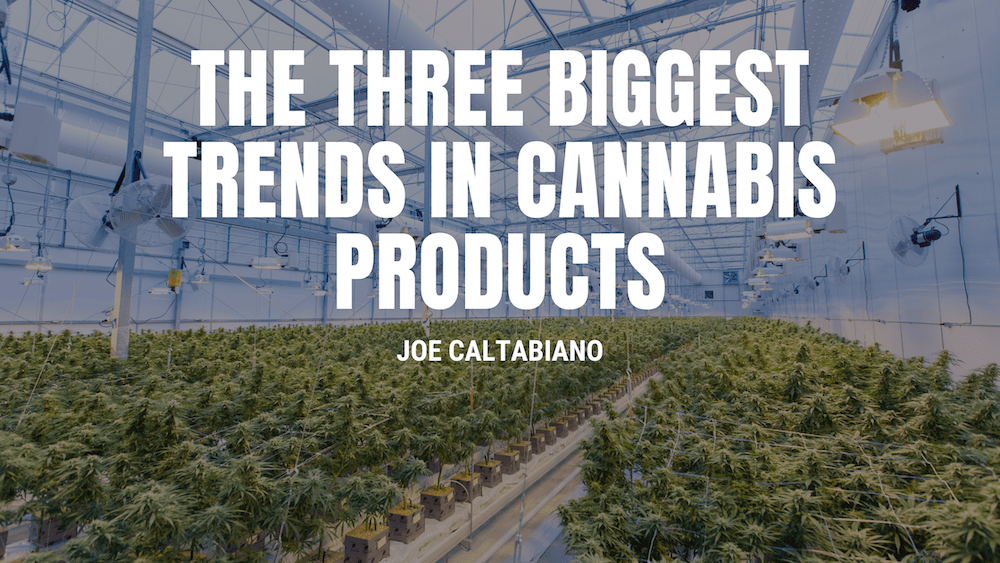No matter where your interests lie with today’s cannabis industry, it is vitally important to understand the latest trends if you want to have any hope of discerning what the future might hold. And that can be a huge undertaking in this sector, given how today’s legal cannabis space encompasses everything from recreational marijuana to physician-prescribed medical cannabis.
To complicate things, myriad market dynamics continue to change in this emergent industry, so it’s not uncommon to see yesterday’s trends and regulations undergo a sea change as more consumers begin to use more cannabis products and therapies. And even though some states have had legalized cannabis markets for years, it remains a relatively new entity in many more, meaning the sector will continue to undergo substantial changes as it grows state by state toward full national legalization.
As 2021 drifts into its autumnal decline, here’s a brief look a trio of some of the biggest trends worth nothing, especially because of how they might affect the industry going forward:
States have led the advance of the industry
In the latest iteration of the Green Wave we’ve seen this year, it’s been the individual states taking the lead on expanding the industry in any form, recreational or medical. While congressional lawmakers generate a lot of headlines about measures such as the SAFE Banking Act and the MORE Act, it’s been individual states doing the heavy lifting as four – Connecticut, New Mexico, New York and Virginia – passed legislation to legalize adult-use cannabis. And cannabis industry work this year took off in other states such as New Jersey, which had approved adult-use cannabis at the polls the previous year.
Another state – South Dakota – would have become the first state in U.S. history to legalize recreational and medical cannabis simultaneously this year after its 2020 ballot measure, but the amendment legalizing this was struck down as unconstitutional because of ballot language concerns.
Eventually, Congress will have to confront the needs and concerns of this industry more directly as it becomes more important to the electorate. And when fundamental federal changes eventually come (and they will), even more changes will be in store for the industry.
Moose Mady, VP of Digital Marketing at MJ Wholesale, which supplies packaging nationwide, says states will continue to exert outsized influence on the industry.
“When marijuana is legalized federally, the ever-changing trends in the industry will be similar to those of tobacco and alcohol, with each state having their take on the federal laws,” Mady said.
Social-equity concerns are not temporary
As the industry has expanded this year, so have calls for social equity. Unlike the social-equity concerns voiced in other mainline industries, the call for greater equity in today’s legal cannabis industry is one that will continue to have resonance, given how so many people of color have suffered for so long under the War on Drugs.
Aside from the grievously unfair way in which blacks and other minorities were targeted for drug arrests and severe convictions for decades, these arrests and incarcerations historically have prevented convicted felons from participating in today’s legal and highly lucrative cannabis industry. This year, a host of concerned parties from advocacy groups to MSO brands have taken vocal stands on these topics, and it’s one that resonates with a wide swath of cannabis consumers, too.
Small strides are being made now, such as in California, where the nation’s oldest market is now offering incentives to entice previously convicted drug felons back into today’s cannabis space. By lowering application fees and relaxing licensing requirements, the state is seeking to give these individuals a chance to use some of their previous skills and, at the same time, get a small degree of repayment for the time they may have spent behind bars for doing what is legal and profitable today.
And it’s something being supported by today’s cannabis businesses, too. As a representative for Bear Extraction shared recently, practical (and potentially profitable) social equity efforts like those in California and similar ones in other states are growing but more are needed to expand minority ownership in the industry.
Cannabis acceptance and research is growing
As more states have legalized cannabis, a majority of Americans now approve of its use, according to Pew Research. Meanwhile, the number of people who have tried cannabis for the first time has increased by 140% in the past year, thanks to better education and access to information about cannabis.
And scientific information is ramping up today like never before. Despite the fact that cannabis remains a Schedule 1 drug under the Controlled Substances Act, greater acceptance of cannabis use in the U.S. population has eased the reluctance many researchers once had.
And this year like never before, consumers have been paying attention to a lot of this health research. As a result, cannabis consumption increasingly enjoys a shift towards holistic, organic lifestyles and use by consumers seeing a greater sense of well-being.
And as the pandemic has raised stress levels across the population, a rising number of new and established users have become reacquainted with the value of cannabis for treating stress. As a result, many dispensaries and cannabis brands have shifted their customer-service strategies and marketing campaigns to focus on medical research about the health aspects of cannabis. Now matter the future course of the COVID-19 pandemic, those consumer concerns will remain for some time.
